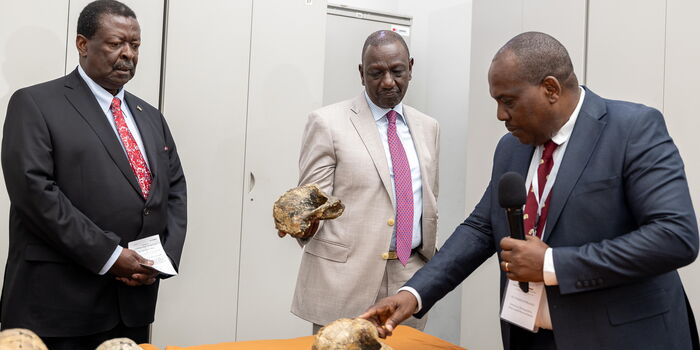We all know President William Ruto as the fifth President of the Republic of Kenya or as the first elected Deputy President of Kenya.
Before that, we knew him as the Minister of Home Affairs, Agriculture, and later the Minister of Higher Education. This is all while being the long-serving Eldoret North Member of Parliament from 1997 to 2013. For the majority of his adult life, Ruto has been in public service, culminating in the highest position, holding keys to the house on the hill.
However, not much is known of what Ruto could have been if he was not in government. Many would assume that he would have been an illustrious farmer, something he has prided himself in.
Far from it. Ruto has revealed that his preferred career would be in science. Ruto studied Botany and Zoology at the University of Nairobi, graduating in 1990. During the unveiling of the Gedi National Monument as Kenya’s 8th UNESCO World Heritage Site, Ruto provided a glimpse of how he would have turned out if he pursued his educational interests.
A Moderna scientist works in the company’s lab.
DAVID L. RYAN/THE BOSTON
While speaking at the event held at the National Museums of Kenya (NMK), Ruto revealed that he would have been a scientist, much to the amusement of the guests present.
“Many of you might not know this, but I spent three years of my university education in the same class with the Director General (National Museums of Kenya—Prof Mary Gikungu). If I was not doing what I am doing now, possibly I could be somewhere in this building,” Ruto stated.
“Many of my classmates ended up in scientific research institutions: NMK, KEMRI (Kenya Medical Research Institution), and others. I am truly privileged to be here in this compound. I was reminding Mary we came here for some of the lessons on human evolution, and Dr (Richard) Leakey took us through what we were learning then,” he added.
While acknowledging the financial challenges plagued by scientists in Kenya, Ruto seemingly hinted at a return to the scientific world upon completion of his presidential duties.
“I agree that we are not paying our scientists as we should. Many of them are under the Public Service and there is a need to relook at their terms of service and their salaries. Therefore, as has been requested by the DG, I will get the Head of Public Service to do the needful and form a small team to give us an assessment of what needs to be done and match the remuneration of our scientists with others around the region,” Ruto averred.
“I am not doing this because possibly I could become a beneficiary. Maybe when I am done with what I am doing currently, I could take up my scientific discourse here at NMK or in another place,” he added.
Ruto went on to express his pride about the strides the NMK had made over the course of time and pledged the government’s support in this regard.
“I am very proud of the progress the National Museum has made and I promise to make a contribution to further this progress,” he noted.
To this effect, Ruto noted the infrastructural challenge faced by the NMK and other historical sites and museums in the country in protecting cultural artifacts and resources. The Head of State went on to make a monetary pledge to the Principal Secretary for Arts, Culture, and Heritage, Ummi Bashir.
“I agree that we need to expand the physical facilities here at the museum, at Uhuru Gardens, and at other sites so that we can have appropriate storage and display of the wealth and historical assets that we have,” Ruto informed.
“Therefore, Madam Ummi (Bashir) we are going to get you a billion shillings to start. We need to develop another building here and in Uhuru Gardens so that all the cultural assets can be safely secured and displayed appropriately,” he ddeclared.
President Ruto inspecting a skeleton in the presence of Prime CS Musalia Mudavadi and other officials from the National Museums of Kenya during the unveiling of Gedi ruins as a UNESCO World Heritage Site on Friday, December 13, 2024
Photo
PCS


